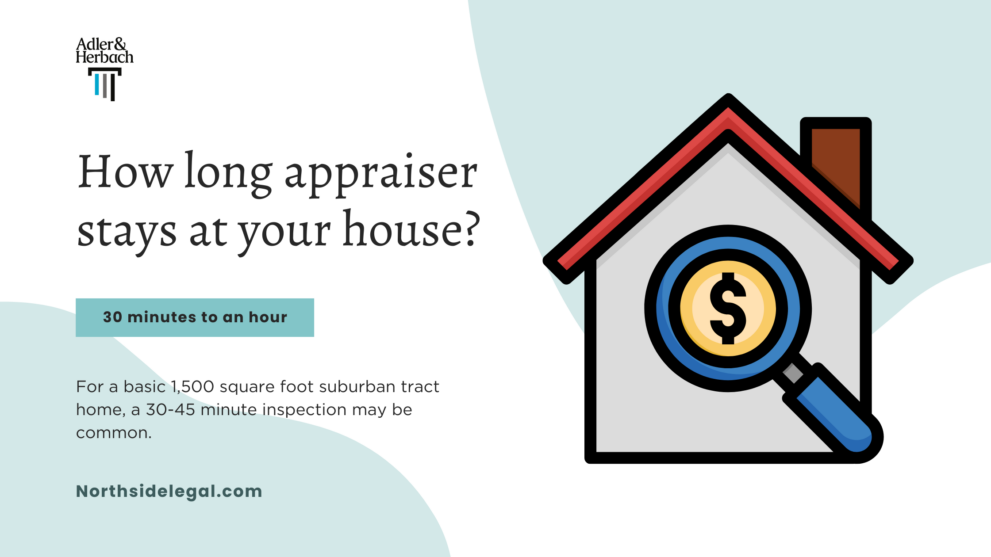If you’re in the process of purchasing or refinancing a home, you’ll need to get an appraisal done. An appraiser will visit your property to evaluate its condition, features, and fair market value. But how much time does an appraiser actually spend inspecting your home?
Understanding what to expect from a home appraisal visit can help you properly prepare and make the process smooth for all involved. Here’s an overview of how long appraisers stay to examine the property.
How long does an appraiser stay at your house?
Most residential appraisers will spend 30 minutes to one hour inspecting the interior and exterior of a single-family home. Appraisers are experienced professionals who can glean a lot of information in a short site visit.
They will measure rooms, document upgrades, check systems, and photograph the home. Appraisers focus their limited inspection time on gathering the specific details that impact valuation the most.
For a basic 1,500 square foot suburban tract home, a 30-45 minute inspection is about average. Unique homes with many custom features can take a full hour to properly appraise.

Effect of Property Size
Larger, more expansive homes will require additional time for the appraiser to thoroughly cover all areas. It may take 1-2 hours to fully inspect a 5,000+ square foot luxury property on acreage.
At the same time, some smaller condos or apartments can sometimes be appraised in as little as 15-20 minutes. The appraiser focuses on documenting the unit itself and capturing relevant details about the overall building/complex.
Preparing for the Visit
To maximize the appraiser’s efficiency, make sure you have the property accessible and lights turned on ahead of time. Let them know about any pets, alarm systems, locked areas, or tricky doors.
Provide appraisers access to attics, crawl spaces, and mechanicals. Having your inspection reports on hand can also help avoid the appraiser missing covered items.
Exterior Inspection
Appraisers start by documenting the home’s exterior architectural style, materials, condition and taking photos. They will measure the structure and note details like roofing, siding, windows, and foundation.
Depending on the lot size, they may walk and photograph the entire grounds, patios, landscaping, outbuildings, and fencing. For larger rural acreage, they may just view and value a representative portion surrounding the home.
Interior Inspection
After scoping the exterior, appraisers focus on the interior living spaces. They will evaluate room sizes, layout, finishes, and mechanical systems while snapping photos. Unique or expensive features like custom cabinetry get special attention.
Appraisers will also note any visible signs of wear, damage, or dated elements that could impact value. They may bring small tools like moisture meters and outlet testers to evaluate issues not easily seen.
Follow-Up Work
After the on-site visit, the appraiser still has research and analysis work to complete the full report. They will review comparable sales, local market trends, assess condition and desirability relative to the neighborhood.
The appraiser then reconciles all the data gathered to come up with a final opinion of value for your property.
Learn more about
- How long the appraisal takes to get back?
- How long the appraisal takes to complete?
- Who orders the appraisal in a home purchase?
Knowing what to expect will help make your appraisal inspection smooth and efficient. While appraisers don’t spend hours at your home, they capture the necessary information in a concentrated visit. A little preparation goes a long way to getting you a timely and accurate appraised value!


